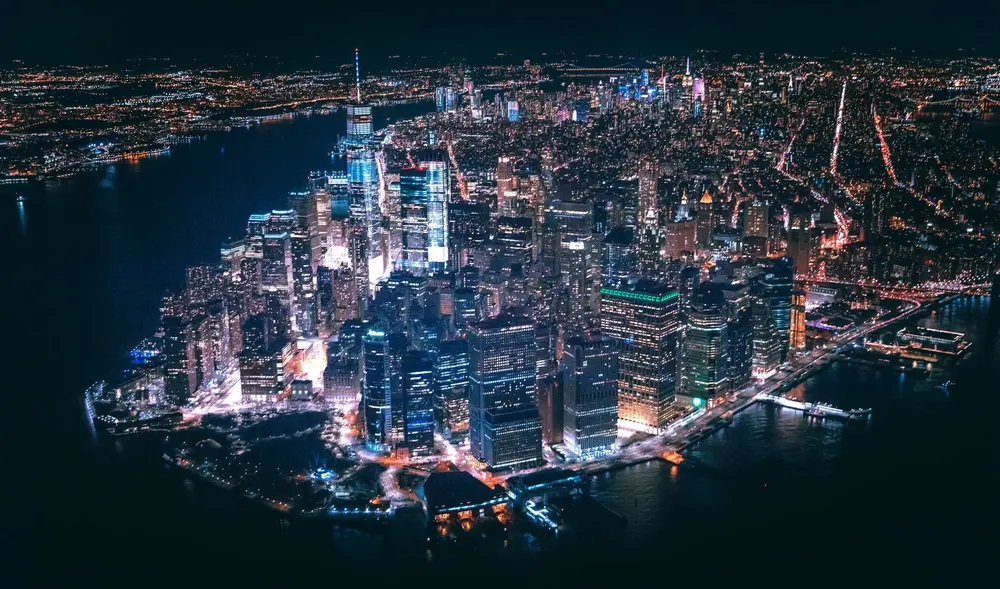Does Hollywood Promote Bad Policies?

I went to see The Batman a few days ago. The opening scenes of the movie painted a picture of a major American city as one rife with crime and squalor. My friend, who has never been to New York, leaned over and asked me if this was what New York was really like. In the six years now that I have lived outside of America, I’ve become accustomed to people assuming New York, outside of its well protected tourist areas is a rather frightening place to live. This is not just a view held by people outside of the United States. In fact, as I prepared to move from my small town in upstate New York to the city, friends and coworkers in that small town predicted doom and gloom in my future.
One of the first scenes in The Batman involves a group of men in facepaint riding the subway. They’re gathered around watching a video on one of the men’s phones of a random assault. Apparently motivated by this video, they look around the subway car for their own victim. If you have lived in an American city in the last ten years, you might recognize this reference to the ‘knockout game.’
The ’knockout game’ was, for a while, something of a moral panic. Roving gangs of teens in cities were going around randomly assaulting people for the sheer fun of it. The goal of the game was to knock out a person with one punch. The only problem is… this game did not exist. Random assaults do exist. In 2010, the US Department of Justice counted 1.7 million ‘nonfatal violent victimizations committed […] by strangers.’ However, this was an incredible 77% decline from 1993 (Harrell, E., 2012). Even police forces in American cities were adamant that there was no game. Instead, what was happening was that the media was cherry picking random assaults, amplifying them, and tying them together to create a narrative of a new dangerous trend amongst urban youths.
Movies like The Batman embrace this distorted view of urban life and for the millions of Americans who do not live in major urban centers like New York, Chicago or Los Angeles, these movies play up the dangers of urban life while entirely neglecting the good. Indeed, the few random citizens of Gotham that we do spend any time with in the movie do nothing but cower as they are robbed or assaulted.
On March 13, 1964, Kitty Genovese, a bartender arriving home in the early morning hours was murdered by a stranger in New York City. In reporting the story, the New York Times asserted that 37 people ‘watched’ and did nothing (Gansberg, 1964). The story caught the public’s imagination and fueled a belief that cities were lawless and city dwellers were indifferent to suffering. The problem is, the story was grossly exaggerated. At best only a handful of people heard something, some of them assumed it was two drunk people arguing and only a few caught glimpses of an attack. Two people did call the police and a woman went out and cradled Kitty as she died.
Genovese’s murder occurred in a much larger cultural context. Black Americans, who had for generations lived mostly in the southern United States had, starting in the 1920’s, migrated to northern cities like New York, Chicago and Detroit. In 1920, Black Americans made up 3% of New York’s population. By 1970, Black people made up 22% of the city’s population.
As Black people entered northern urban city life, white people began to exit the cities. New advances like a sophisticated highway system and a spree of single-family home building made it easy for people to live in the suburbs of cities and commute in for work. Government programs further encouraged people to buy homes, but excluded Black Americans (Gross, T., 2017). This phenomenon of white Americans leaving cities for the suburbs became known as ‘white flight.’ White flight not only meant fewer white people in cities, but also meant that a significant share of a city’s tax base had relocated. Because American localities finance things like schools and infrastructure primarily through local taxes, schools and infrastructure in northern cities deteriorated (Boustan, L.P., 2010).
As white people left cities, their perceptions of city life relied heavily on local news, specifically local tv news. Television news, to hold onto viewers, frequently emphasizes urban crime, devoting nearly 1/3 of airtime to crime. The crime covered in local news is often violent and atypical. Viewers walk away thinking crime is out-of-control and, since it is the local news, this chaos is nearby (Callanan, V.J., 2012).
Which brings us back to The Batman. If you put a couple million people together in one place, bad things do sometimes happen, not because people need to be cowed into being law-abiding, but because of complex issues like systemic racism, poverty and persistent inequality. The Batman embraces a worldview that is just untrue. While a movie might just be escapist fun, this movie’s premise is based on a contemptuous view of urban life, one where chaos is imminent if not for the heavy hand of the state (or an vengeance obsessed billionaire suffering from insomnia) to control violence. The Batman pays lip service to the fact that a masked vigilante is not enough to improve the living conditions of a city.
The fact is that for decades now, Americans have warmed to a view that the only way to deal with violence in cities is by meeting it with violence. Over the course of a decade, from 2002 until 2013, when the practice was deemed unconstitutional, New York Police conducted over five million stop-and-frisk stops. Black and Latino New Yorkers were nine times more likely to be stopped than white New Yorkers. These stops, which involved police stopping random people and searching them for weapons, led to few arrests, but led millions of New Yorkers to feel dread at the sight of a police car. As one Black New Yorker wrote, ‘I incorporated into my daily life the sense that I might find myself up against a wall or on the ground with an officer’s gun at my head. For a black man in his 20s like me, it’s just a fact of life in New York.‘ (Peart, N.K., 2011). When we see Batman, we love the idea of those that commit violence suddenly fearful of the overpowering violence of Batman. In real life though, obtrusive, heavy-handed violence by the police to combat street violence instead terrorizes the innocent.
In the 1960’s, as ‘race riots’ ripped through American cities, President Lyndon B. Johnson set up the National Advisory Commission on Civil Disorders, The Commission, which would come to be remembered as the Kerner Commission, after the chairman, Governor Otto Kerner of Illinois to study what was causing these riots. The report issued a scathing rebuke of white America:
‘Our nation is moving towards two societies, one black, one white -- separate and unequal […] violence cannot build a better society. […] to pursue our present course will involve the continuing polarization of the American community […] The alternative is not blind repression or capitulation to lawlessness. It is the realization of common opportunity for all within a single society. This alternative will require a commitment to national action – compassion, massive and sustained, backed by the resources of the most powerful and richest nation on earth. From every American it will require new attitudes, new understanding and, above all, new will. […] What white Americans have never fully understood – but what [Black Americans]can never forget – is that white society is deeply implicated in the ghetto. White institutions created it, white institutions maintain it and white society condones it’ (1968).
The calls of the Kerner Commission went largely unheeded. Even now, 70% of New York City schools are defined as ‘intensely segregated’ (more than 90% nonwhite). 17% of city schools in New York are considered ‘extremely segregated’ or ‘apartheid’ schools, with 99% nonwhite enrollment (UCLA, 2021). Cities that have tried aggressive school integration have given up due to intense backlash (Boston Research Center, n.d.).
American cities are vibrant, diverse, and rich with culture. They are not without problems. Inequality and de facto segregation persist. The abundance of firearms in America is, in fact, a real problem. What is far more worrisome though is that many people believe the worst about cities and the people in them. Dim views of ‘others’ have for decades now been stoked and reinforced by what people outside of cities have seen on the news and seen fictionalized in movies.
References:
Boustan, Leah Platt. (2010). Was Postwar Suburbanization ‘White Flight’? Evidence from the Black Migration. Princeton.
Callanan, Valerie J. (2012). Media Consumption, Perceptions of Crime Risk and Fear of Crime: Examining Race/ethnic Differences. Sociological Perspectives. Vol 55 No 1 (Spring 2012). Pp. 83-115
Gansberg, Martin. (1964). 37 Who Saw Murder Didn’t Call the Police. The New York Times. https://timesmachine.nytimes.com/timesmachine/1964/03/27/97175042.html?pageNumber=1
Gross, Terry. (2017). A ‘Forgotten History’ of How the US Government Segregated America. NPR. www.npr.org/2017/05/03/526655831/a-forgotten-history-of-how-the-u-s-government-segregated-america
Harrell, Erika. (2012). Violent Victimization Committed by Strangers, 1993-2010. U.S. Department of Justice. https://bjs.ojp.gov/content/pub/pdf/vvcs9310.pdf
Peart, Nicholas K. (2011). Why Is the NYPD After Me? The New York Times. www.nytimes.com/2011/12/18/opinion/sunday/young-black-and-frisked-by-the-nypd.html
(1968). Report of the National Advisory Commission on Civil Disorders. [Washington: United States, Kerner Commission www.ojp.gov/ncjrs/virtual-library/abstracts/national-advisory-commission-civil-disorders-report
(2021) Report Shows School Segregation in New York Remains Worst in the Nation. The Civil Rights Project. UCLA. www.civilrightsproject.ucla.edu/news/press-releases/2021-press-releases/report-shows-school-segregation-in-new-york-remains-worst-in-nation.
(n.d.) Desegregation Bussing. Encyclopedia of Boston. Boston Research Center. https://bostonresearchcenter.org/projects_files/eob/single-entry-busing.html.
Cover photo by Andre Benz on Unsplash

About the author
John M. McElfresh is a second-year MPP student at the Brandt School. He received his bachelors degree in History from the University at Buffalo in the United States. His primary interests in public policy are climate and agricultural policies. He is focusing his studies on green public procurement strategies and building sustainable food systems with a focus on healthy foods, sustainability and the viability of small farms. He is best known at the Brandt School, however, for his two cats.
~ The views represented in this blog post do not necessarily represent those of the Brandt School. ~